
Overview
The publishing industry encompasses a broad range of activities related to the creation, production, marketing, and distribution of books, magazines, newspapers, and digital content. It has undergone significant changes in recent years due to the rise of digital technology and online platforms. Publishers must adapt to new business models, marketing strategies, and consumer preferences to stay competitive in a constantly evolving industry.
GAO’s RFID, BLE, IoT, and drone technologies have helped its customers in publishing industries to improve their work processes, their operations and productivity by better management of their staff, materials and operational equipment such as computers and laptop, printers and scanners, publishing software, digital cameras, packaging and shipping equipment.
Ranked as a top 10 global RFID supplier and based in New York City and Toronto, GAO RFID Inc offers a wide choice of RFID (radio frequency identification) readers and tags at ultra high frequency (UHF), high frequency (HF, including NFC) and low frequency (LF), BLE (Low Energy Bluetooth) gateways and beacons, and various RFID and BLE systems such as people tracking, asset tracking, access control, parking control, fleet management, WIP (work in progress), traceability. Such RFID and BLE products and systems, together it’s IoT and drone technologies, have been widely used in the publishing industries.
Applications & Benefits of GAO’s RFID, BLE, IoT& Drones for the Publishing
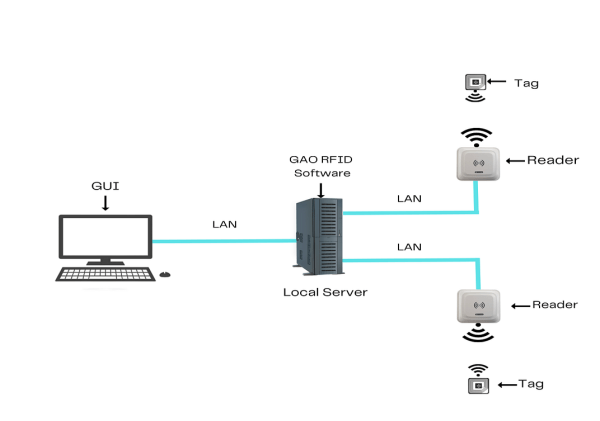
To satisfy its customers, GAO’s RFID or RFID Systems for the publishing industries are offered in2 versions. One version is that its software is running on a local server, and another version is that its software runs in the cloud. The above illustrates GAO system for the publishing industries with its software running on a local server.
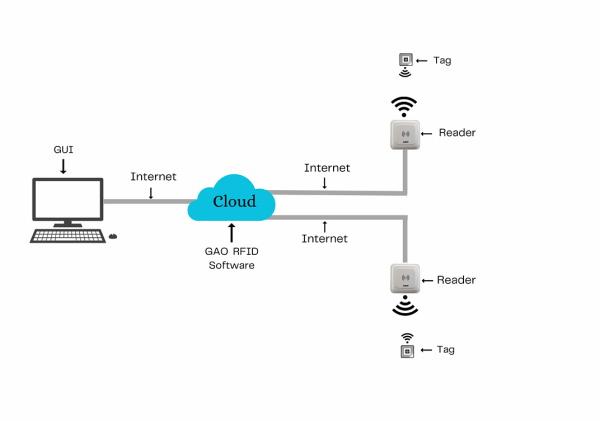
The above illustrates GAO system for the publishing industries with its software running in cloud
GAO’s RFID technologies bring the many benefits to the publishing Industries:
- Increased efficiency and productivity: GAO’S RFID can reduce the time and effort required for manual tracking and data entry, enabling employees to focus on higher-value tasks.
- Enhanced supply chain visibility: GAO’S RFID can provide publishers with greater visibility into their supply chain, enabling better tracking of shipments and improved coordination with vendors and other partners.
- Increased accuracy in tracking returns: With GAO’S RFID, publishers can more accurately track returns of unsold publications, enabling better inventory management and cost control.
- Better tracking of product expiration dates: For publishers that produce publications with expiration dates, such as magazines or newspapers, GAO’S RFID can help ensure that outdated products are removed from inventory in a timely manner, reducing waste and improving customer satisfaction.
- Improved data analytics: GAO’S RFID data can be analyzed to identify trends and insights related to inventory management, customer behavior, and supply chain performance, enabling publishers to make more informed business decisions.
GAO’s BLE technologies offer longer reading range and particularly attractive for applications with larger work spaces within the publishing industries:
- Enhanced Reader Experience: Our BLE-enabled beacons can be used to provide readers with personalized content based on their location within a bookstore or library. Publishers can use this technology to deliver targeted content, recommendations, and promotions to readers as they browse the shelves.
- Efficient Inventory Management: Our BLE beacons can be used to track the movement of books and other publications in a store or library, helping publishers to monitor inventory levels in real-time and improve their supply chain management.
- Interactive Marketing: Publishers can use our BLE beacons to create interactive marketing campaigns that engage readers and encourage them to explore new books and authors. For example, publishers can use beacons to offer exclusive content or discounts to readers who visit certain sections of a store or library.
GAO’s RFID and drone technologies are often combined and such solutions offer the following benefits to the publishing industries:
- Innovation and Competitive Advantage: The integration of GAO’s RFID and drones in the publishing industry demonstrates technological innovation and can provide a competitive edge. Publishers utilizing these technologies can differentiate themselves by offering faster delivery, improved inventory management, and enhanced customer service.
- Quick Delivery: Drones equipped with GAO’s RFID readers can quickly locate and retrieve specific books or publications from a warehouse, enabling faster and more efficient delivery to bookstores or libraries. This can help publishers to improve their delivery times and increase customer satisfaction.
- Enhanced Security: Our RFID tags can be used to track and monitor the movement of books and publications, reducing the risk of theft or loss. Drones equipped with GAO’s RFID readers can quickly locate and recover missing items, improving the security of the supply chain.
Here are benefits of GAO’s IoT technologies to the publishing industries:
- Energy Efficiency: IoT devices can optimize energy usage in publishing facilities, regulating lighting, HVAC systems, and equipment usage based on occupancy or real-time needs, reducing energy consumption and costs.
- Data-driven Decision Making: IoT-generated data can inform publishers’ strategic decision-making processes, enabling data-driven insights into market trends, reader preferences, and content performance.
- Cost-Effective: IoT technology can be used to automate various aspects of the publishing process, reducing the need for manual labor and expensive equipment. This can help publishers to reduce costs and improve their operational efficiency.
- Real-Time Data: IoT sensors and devices can provide real-time data on various aspects of the publishing process, including inventory levels, reader behavior, and supply chain efficiency. This data can be used to make informed decisions about inventory management, marketing strategies, and future publication plan.
GAO Helps Customers Comply with Standards, Mandates & Regulations of the Publishing
GAO RFID Inc. has helped many companies in the publishing industries to deploy RFID systems and to ensure such deployments complying with the applicable industry standards, mandates, and government regulations:
RFID, BLE, IoT, & Drone Standards & Mandates
- Digital Millennium Copyright Act (DMCA): This is a US copyright law that criminalizes the production and distribution of technology, devices, or services that circumvent digital rights management (DRM) technologies used to protect copyrighted works.
- International Electrotechnical Commission (IEC) standards for EMC and RF emissions: These standards govern the electromagnetic compatibility (EMC) and radio frequency (RF) emissions of electronic products, including e-readers and other digital devices used in the publishing industry.
- International Organization for Standardization (ISO) standards for paper-based publications: These standards provide guidelines for the size, format, and quality of paper-based publications, such as books and magazines.
- Canadian Environmental Protection Act (CEPA): This Canadian legislation regulates the environmental impact of publications, including the use of environmentally friendly materials, recycling initiatives, and sustainable production practices.
- Americans with Disabilities Act (ADA): This US law prohibits discrimination against individuals with disabilities and requires accessibility accommodations for people with disabilities in places of public accommodation, including digital publications and websites.
- Accessibility for Ontarians with Disabilities Act (AODA): This Canadian legislation aims to create accessible environments and equal opportunities for individuals with disabilities, including accessible formats for published materials such as books and digital content.
- Consumer Product Safety Improvement Act (CPSIA): This US law sets safety standards for consumer products, including books and other published materials, to ensure they do not pose risks to children and comply with safety requirements.
- Children’s Book Publishing and Advertising Regulations: These Canadian regulations specifically focus on advertising and marketing practices targeted at children, ensuring that publishers follow guidelines for truthful, accurate, and appropriate advertising in children’s books.
- ANSI C63.10 (RFID, BLE): U.S. standard for electromagnetic compatibility of RFID and BLE devices, ensuring they do not cause interference with other devices.
US. Government Regulations:
- Copyright Act: Protects original works of authorship, granting exclusive rights to creators and providing legal remedies for infringement.
- First Amendment: Guarantees freedom of speech and press, preventing government censorship and promoting the free exchange of ideas.
- Children’s Online Privacy Protection Act (COPPA): Regulates the collection and use of personal information from children under 13 by websites and online services, ensuring their privacy and safety.
Canadian Government Regulations:
- Broadcasting Act: Regulates broadcasting and telecommunications activities, ensuring Canadian content requirements and supporting cultural diversity in broadcasting.
- Anti-Spam Legislation (CASL): Regulates commercial electronic messages, requiring consent and disclosure for sending emails, texts, and other electronic communications for commercial purposes.
- Canadian Radio-television and Telecommunications Commission (CRTC) Regulations: The CRTC is responsible for regulating and supervising broadcasting and telecommunications in Canada. Their regulations cover various aspects of the broadcasting industry, including content standards, licensing requirements, and ownership rules.
- Access to Information Act: This act provides individuals with the right to access records held by federal government institutions, including publishing-related documents. It promotes transparency and accountability in government operations.
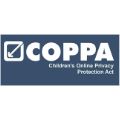
Children’s Online Privacy Protection Act (COPPA)
 International Electrotechnical Commission (IEC) standards for EMC and RF emissions
International Electrotechnical Commission (IEC) standards for EMC and RF emissions
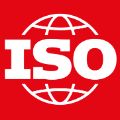
International Organization for Standardization (ISO) standards for paper-based publications

Anti-Spam Legislation (CASL)
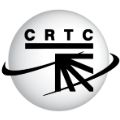
Canadian Radio-television and Telecommunications Commission (CRTC) Regulations
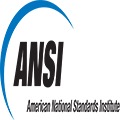
American National Standard Institute

Health Insurance Portability and Accountability Act (HIPAA)
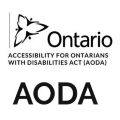
Accessibility for Ontarians with Disabilities Act

Canadian Environmental Protection Act

Americans with Disabilities Act

Consumer Product Safety Improvement Act (CPSIA)

First Amendment
GAO Software Provides Easy Integration with API
GAO’s RFID and BLE software offers a free trial for both the server-based and cloud versions, and offers an API to the important systems in the publishing industries such as:
Personnel Management:
- Employee scheduling and attendance tracking: Efficiently manage work schedules and track employee attendance to ensure optimal staffing and attendance compliance.
- HR information systems: Streamline employee record management, benefits administration, and payroll processing for effective HR operations.
- Performance management and employee evaluations: Assess and enhance employee performance through goal setting, feedback, and performance evaluations.
- Training and development programs: Provide opportunities for skill enhancement and professional growth through training initiatives tailored to employee needs.
- Talent acquisition and recruitment processes: Attract and hire qualified candidates through effective recruitment strategies and selection processes.
Equipment Management:
- Asset tracking and management: Track and manage printing equipment, machinery, and devices to ensure efficient utilization and maintenance.
- Maintenance and servicing schedules: Implement scheduled maintenance and servicing for equipment to maximize reliability and minimize downtime.
- Inventory management of consumables: Efficiently manage ink, paper, and other consumables to avoid shortages and ensure smooth operations.
- Equipment utilization and optimization analysis: Analyze equipment usage and performance to identify areas for optimization and improve operational efficiency.
Access Control:
- Access control systems: Implement systems to control entry to specific areas and safeguard sensitive information from unauthorized access.
- Identity verification and authentication: Verify the identities of employees and visitors to ensure secure access to restricted areas and digital resources.
- Digital rights management (DRM): Employ DRM measures to control access to electronic publications, protecting them from unauthorized distribution and ensuring copyright compliance.
Warehouse Management:
- Inventory management: Track stock levels and locations of books and publications to efficiently manage inventory and ensure availability.
- Order fulfillment and logistics management: Streamline processes to manage orders and logistics, ensuring timely and accurate deliveries to customers.
- Barcode or RFID-based tracking: Use barcode or RFID technology to track books within warehouses, enhancing inventory visibility and accuracy.
- Pick and pack process optimization: Optimize the picking and packing processes to improve efficiency and reduce errors in order fulfillment.
- Returns management and reverse logistics: Manage returns efficiently, including processing, restocking, and handling reverse logistics to minimize disruptions and maintain customer satisfaction.
Supply Chain Management:
- Supplier management and vendor relationship management: Manage relationships with suppliers and vendors to ensure reliable and efficient supply chain operations.
- Demand forecasting and inventory planning: Predict demand patterns and plan inventory levels to meet customer needs while minimizing excess stock.
- Order management and tracking: Effectively manage and track orders from publishers to distributors and retailers, ensuring smooth order fulfillment.
- Collaboration platforms: Provide platforms for supply chain partners to share information, collaborate, and coordinate activities for seamless operations.
- Supply chain analytics and performance measurement: Utilize analytics to gain insights into supply chain performance, enabling continuous improvement and informed decision-making.
Other Applications:
- Content management systems: Manage digital publishing content, including creation, editing, and version control, for efficient content production and organization.
- Marketing and sales automation systems: Automate campaign management and CRM to streamline marketing and sales processes.
- Customer analytics and segmentation: Analyze customer data to understand preferences and behavior, enabling targeted marketing and personalized recommendations.
- Digital distribution platforms and e-commerce solutions: Utilize platforms for online book sales, facilitating digital distribution and e-commerce transactions.
- Data analytics and business intelligence: Leverage data analytics and business intelligence tools for informed decision-making and market analysis in the publishing industry.
GAO has integrated its RFID, BLE, IoT and drone systems with some of leading software and cloud services in the publishing industries. Below are some of popular software and cloud services in the publishing industries:
- SAP SuccessFactors: This cloud-based HR management software offers modules for employee onboarding, performance management, talent acquisition, learning, and development. It helps streamline HR processes and enhance workforce productivity.
- Workday HCM: Workday provides a comprehensive human capital management (HCM) suite, including features for HR administration, payroll, time tracking, benefits management, and talent management. It offers robust reporting and analytics capabilities.
- Oracle HCM Cloud: Oracle’s HCM Cloud solution covers core HR, talent management, workforce rewards, and employee engagement. It offers self-service options for employees, advanced analytics, and integrates with other Oracle products.
- ADP Workforce Now: ADP offers an all-in-one HR solution that encompasses payroll, benefits administration, talent management, time and attendance tracking, and employee self-service features. It is designed to streamline HR operations and compliance.
- Infor EAM: Infor EAM (Enterprise Asset Management) is a comprehensive software solution for equipment and asset management. It provides features for maintenance planning, asset tracking, work order management, and predictive maintenance.
- IBM Maximo: IBM Maximo is an enterprise asset management system that helps track and manage equipment, maintenance schedules, work orders, and inventory. It offers robust asset tracking, condition-based maintenance, and mobile capabilities.
- Fiix: Fiix is a cloud-based maintenance management software that allows organizations to track and manage their equipment, maintenance activities, and inventory. It offers features such as work order management, preventive maintenance, and asset tracking.
- UpKeep: UpKeep is a mobile-first maintenance management solution that assists with equipment tracking, work order management, preventive maintenance scheduling, and inventory management. It provides real-time visibility into maintenance activities.
- Honeywell Access Control: Honeywell offers a comprehensive access control solution that includes features such as identity verification, visitor management, and access control systems to secure specific areas or information within publishing facilities.
- Brivo Access Control: Brivo provides cloud-based access control systems with features like card access, mobile credentials, and video surveillance integration. It offers centralized management and monitoring of access across multiple publishing locations.
- Manhattan Associates’ Warehouse Management System (WMS): Manhattan Associates provides a robust WMS that streamlines warehouse operations, including inventory management, order fulfillment, labor management, and real-time tracking of books and publications within the warehouse.
- JDA Warehouse Management: JDA Warehouse Management offers a comprehensive solution for warehouse management, focusing on optimizing processes such as receiving, put-away, picking, packing, and shipping. It provides real-time visibility into inventory and supports efficient warehouse operations.
- Adobe Creative Cloud: Adobe Creative Cloud offers a suite of applications for digital publishing, including Adobe InDesign, Photoshop, Illustrator, and Acrobat. These tools are widely used for designing and creating print and digital publications.
- QuarkXPress: QuarkXPress is a professional desktop publishing software that provides tools for layout design, typesetting, and graphics manipulation. It is commonly used for creating magazines, books, and other print publications.
- Avid Media Composer: Avid Media Composer is a video editing software used in the publishing industry for creating multimedia content, such as promotional videos, author interviews, and book trailers.
- WordPress: WordPress is a popular content management system (CMS) that is widely used for publishing websites and blogs. It provides customizable templates, plugins, and features for managing and publishing digital content.
- PressReader: PressReader is a digital publishing platform that provides access to thousands of newspapers and magazines from around the world. It allows publishers to distribute their content digitally and provides readers with a comprehensive reading experience.
- K4 Publishing System: K4 is an editorial workflow management system designed specifically for the publishing industry. It streamlines the entire publishing process, including content creation, editing, layout, and production.
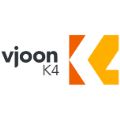 K4 Publishing System
K4 Publishing System

PressReader

WordPress

Avid Media Composer
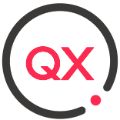
QuarkXPress
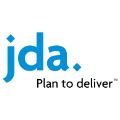
JDA Warehouse Management
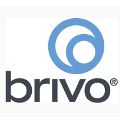
Brivo
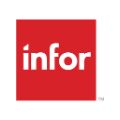
Infor
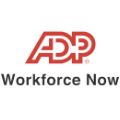
ADP Workforce

Workday
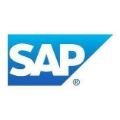
SAP SuccessFactors
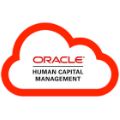
Oracle
GAO has worked with some of the leading technology companies in the publishing industries in to provide integrated its RFID, BLE, IoT and drone solutions to customers. Here are some of the technology leaders in the publishing industries:
- Apple Inc: Apple offers hardware and software solutions relevant to the publishing industry, such as the Mac lineup for content creation, iBooks Author for digital publishing, and the App Store for distributing digital publications.
- IBM Corporation: IBM provides various solutions for publishers, including content management, data analytics, cloud services, and artificial intelligence technologies like IBM Watson for advanced data processing and cognitive capabilities.
- Salesforce.com: Salesforce offers cloud-based customer relationship management (CRM) solutions that can be utilized by publishers for managing customer interactions, marketing campaigns, and sales processes.
- Google LLC: Google provides a range of tools and services that can benefit the publishing industry, including Google Workspace (formerly G Suite) for productivity and collaboration, Google Analytics for website analysis, and Google AdSense for advertising monetization.
- Amazon Web Services (AWS): AWS offers a wide range of cloud computing services that publishers can leverage for hosting, storage, content delivery, and data analytics.
- HP Inc: HP provides hardware solutions, including printers and scanners, which are commonly used in the publishing industry for high-quality printing and digitization of content.
- OpenText Corporation: OpenText offers enterprise information management solutions, including content management, digital asset management, and collaboration tools that can benefit publishers.
- Amazon: Amazon offers various electronic devices, such as Kindle e-readers and Fire tablets, which are widely used for reading and accessing digital publications. Additionally, Amazon provides publishing platforms like Kindle Direct Publishing for self-publishing authors.
- Barnes & Noble: Barnes & Noble is a prominent retailer of books and e-readers. Their NOOK devices and NOOK Press platform provide publishing and distribution options for authors and publishers.
- Rakuten Kobo: Rakuten Kobo specializes in e-readers and digital publishing. Their Kobo devices and Kobo Writing Life platform enable authors and publishers to distribute and sell e-books globally.
- Sony Corporation: Sony has been involved in the publishing industry with its e-book reader, Sony Reader. Though no longer actively producing e-readers, Sony continues to offer various electronics that can support digital publishing needs.
- Samsung Electronics: Samsung manufactures a range of electronic devices, including tablets and smartphones, which are commonly used for accessing and reading digital publications.

Samsung

Apple Inc.

Sony
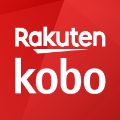
Rakuten Kobo

Barnes & Noble

Amazon
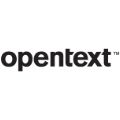
Opentext Corporation

HP Inc
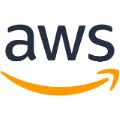
Amazon Web Services

Google Llc.

Salesforce
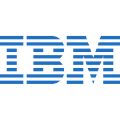
IBM Corporation
Case Studies of RFID Applications
A Case study of RFID Application in publishing industries :
HarperCollins Publishers, one of the leading publishing companies in Canada, implemented RFID technology in their distribution centers to enhance inventory management and streamline operations. By attaching UHF RFID tags to their books, they were able to achieve real-time tracking of inventory levels, significantly reducing stock discrepancies and improving order accuracy. The RFID system provided accurate and up-to-date information on the location and status of each book, enabling efficient inventory replenishment and
minimizing stockouts. This streamlined the distribution process, reduced manual labor, and improved overall operational efficiency. With improved inventory management, HarperCollins Publishers experienced increased customer satisfaction and optimized their supply chain operations.
Another Case study of RFID Application in publishing industries :
Simon & Schuster, a prominent publishing company in the United States, adopted RFID technology to enhance the visibility and security of their book inventory. By tagging books with RFID tags, they gained real-time insights into the movement of books within their distribution centers. The RFID system allowed them to track inventory levels, monitor stock movement, and prevent unauthorized removal of books from their premises. This improved inventory control, minimized losses, and enhanced security. Additionally, the accurate tracking and visibility of books enabled Simon & Schuster to optimize their supply chain operations, streamline distribution processes, and ensure timely deliveries. The implementation of RFID technology significantly improved their inventory management practices and strengthened their overall operational efficiency.
A Case study of UHF RFID Application in publishing industries :
Penguin Random House, a prominent publishing company in Canada, leveraged UHF RFID technology to optimize their warehouse management and order fulfillment processes. By affixing RFID tags to their books, they enabled automated tracking and locating of inventory within the warehouse. This resulted in increased operational efficiency, reduced manual errors, and improved overall supply chain operations. The RFID system provided real-time visibility into inventory levels, enabling accurate inventory counts and efficient order picking. Penguin Random House experienced improved order accuracy and faster order processing, leading to enhanced customer satisfaction and improved supply chain performance. The implementation of UHF RFID technology proved to be a significant asset in their warehouse management and distribution operations.
Another Case study of UHF RFID Application in publishing industries :
Hachette Book Group, a renowned publishing company in the United States, deployed RFID technology to improve inventory management and reduce costs. By utilizing UHF RFID tags on their books, they achieved accurate and efficient tracking of inventory throughout their supply chain. The RFID system provided real-time visibility into inventory levels, allowing Hachette Book Group to proactively manage stock levels and minimize out-of-stock situations. The accurate inventory data enabled them to optimize their order fulfillment process, ensuring timely deliveries to customers. As a result, Hachette Book Group improved
order fulfillment accuracy, reduced costs associated with stockouts, and enhanced overall supply chain efficiency. The implementation of RFID technology helped them streamline their operations, enhance customer satisfaction, and achieve cost savings.
Many applications of RFID by GAO can be found here:
GAO RFID Systems & Hardware for the Publishing
GAO RFID Inc. offers the largest selection of BLE gateways, BLE beacons, RFID readers, tags, antenna, printers, and integrated RFID systems for various industries, including the publishing.
BLE (Bluetooth Low Energy)
as well as versatile beacons with such important functions as temperature, humility, vibration and panic button:
GAO’s BLE technology is suitable for many industries, including the publishing.
UHF (Ultra High Frequency) RFID
GAO offers the largest selection of UHF RFID readers for various industries, including the publishing:
GAO RFID offers the widest choice of UHF RFID tags, labels, badges, wristbands for various industries, including the publishing:
and an array of antennas to address different applications:
HF (High Frequency), NFC (Near Field Communications) and LF (Low Frequency) RFID
GAO offers the largest selection of HF, NFC, and LF RFID readers for various industries, including the publishing:
- High Frequency 13.56 MHz Passive RFID Readers
- Low Frequency 134 kHz Passive RFID Readers
- Low Frequency 125 kHz Passive RFID Readers
HF, NFC and LF RFID tags, labels, badges, wristbands for various industries, including the publishing:
and antennas:
GAO also offers RFID printers:
Digital I/O adapters:
and relay controllers:
For embedded applications, GAO offers UHF, HF and LF RFID reader modules:
- UHF 860 – 960 MHz RFID Modules
- 13.56 MHz High Frequency RFID Modules
- 125 kHz Low Frequency RFID Modules
The RFID systems by GAO are highly popular for clients in the publishing:
Physical asset or operational equipment tracking system:
Assets that can be effectively tracked using GAO’s technologies include
- Printing Presses: High-speed printing presses are used for large-scale production of books, magazines, newspapers, and other printed materials.
- Bookbinding Machines: These machines are used to bind individual pages or sheets together to create books, applying techniques like stitching, gluing, or thermal binding.
- Paper Cutters: Precision paper cutters are used to trim and cut large sheets of paper into the desired sizes for book pages or other printed materials.
- Collating Machines: Collating machines help assemble multiple pages or sections into the correct order before binding, ensuring the accuracy of the final product.
- Folding Machines: These machines automate the process of folding large sheets of paper into smaller sizes, enabling efficient production of brochures, leaflets, and other folded materials.
- Die-Cutting Machines: Die-cutting machines are used to create custom shapes or cutouts on printed materials, allowing for unique designs and packaging solutions.
- Laminating Machines: Laminating machines apply a protective layer of plastic film to printed materials, enhancing durability and resistance to wear and tear.
- Proofing Equipment: This includes color proofing systems, such as digital proofing devices or calibrated monitors, to ensure accurate color reproduction in the printing process.
- Digital Printers: Digital printers enable on-demand printing, personalized printing, and short-run printing, offering flexibility and cost-effectiveness for smaller print runs.
- Scanners and Digitization Equipment: These devices are used to convert physical documents, books, and images into digital formats, enabling digital archiving, e-publishing, and online distribution.
- Prepress Equipment: Prepress equipment includes scanners, image setters, and software tools used to prepare digital files for printing, ensuring accurate color reproduction and image quality.
- Book Trimmers: Book trimmers are used to trim the excess edges of bound books, giving them a clean and finished appearance.
People or workers tracking system:
Personnel or people access control system:
Parking or vehicle control system:
GAO Has Served the Publishing Extensively
GAO’s products and technologies have helped its customers in the publishing industries to achieve success in book publishing, magazine and periodical publishing, journal publishing, digital publishing, educational publishing, children’s book publishing, graphic novel and comic book publishing, self-publishing, art book publishing, mobile reading, augmented reality (AR) and virtual reality (VR), content curation.
GAO RFID Inc. has deployed RFID, BLE and IoT projects for many companies in the publishing industries, including many in its various divisions such as:
- Trade Publishing: This division focuses on publishing books for the general public, including fiction, non-fiction, and children’s books.
- Academic Publishing: Academic publishers produce scholarly books, textbooks, and research papers for educational institutions, researchers, and students.
- Educational Publishing: This division creates educational materials such as textbooks, workbooks, digital learning resources, and teaching aids for schools and educational institutions.
- Professional and Technical Publishing: This sector specializes in publishing materials aimed at professionals, such as medical, legal, scientific, and technical publications.
- Magazine Publishing: Publishers in this division produce magazines covering various topics, including lifestyle, fashion, travel, sports, and business.
- Newspaper Publishing: This division focuses on printing and distributing newspapers, including both print and digital formats.
- Digital Publishing: With the rise of digital technology, this division encompasses e-books, online publications, digital magazines, and audiobooks.
- Self-Publishing: Self-publishing allows authors to publish their works independently without traditional publishing houses, often through online platforms.
- Distribution and Wholesale: This sector involves the distribution and wholesale of books and other publications to retailers, libraries, and other outlets.
- Printing and Production Services: Printing and production companies handle the printing, binding, and physical production of books and other printed materials.
- Literary Agencies: Literary agencies act as intermediaries between authors and publishers, representing authors and negotiating publishing deals on their behalf.
- Content Development and Editing: This division includes content development, editing, proofreading, and copywriting services for publishers and authors.
Here are some of the leading companies in the publishing:

Penguin Random House

Hachette Book Group

HarperCollins
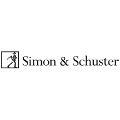
Simon & Schuster India
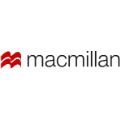
Macmillan

Scholastic
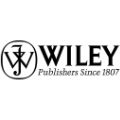
John Wiley & Sons.

Pearson Education
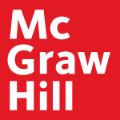
McGraw Hill
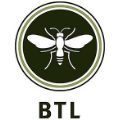
Between the Lines

Groundwood Books

ECW Press

Cengage
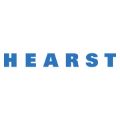
Hearst
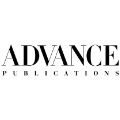
Advance Publications

News Corporation

Conde Nast
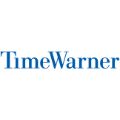
TimeWarner

Meredith
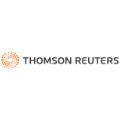
Thomson Reuters

Houghton Mifflin Harcourt

Annick Press

Pajamapress
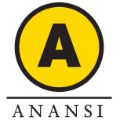
Anansi
